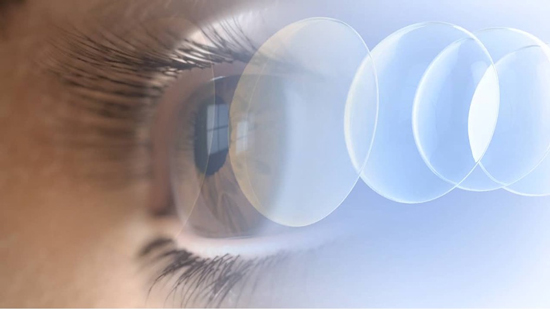In 1951, Czech chemist Otto Wichterle developed the first soft contact lens polymer made from hydrophilic hydroxyethyl methacrylate (HEMA). The water-loving lens allowed more oxygen to pass through to the cornea. The early lenses were made by filling small molds with the polymer, then allowed to harden. The resulting “buttons” were then cut to the desired prescription. The edges had to be smoothed by hand. Clearly, a more efficient way to make the lenses was needed.
Wichterle knew there had to be a better way to produce the lenses. On Christmas Eve, 1961 he invented a spin casting machine made from parts from a doorbell, phonograph, and his son’s bicycle and erector set. (That must have been quite a Christmas!) Working from his kitchen table, Wichterle produced more than 100 lenses. In 1962, he received a patent for the process and produced more than 5,000 lenses. In 1965, Bausch & Lomb received a sublicense to the rights for the process and became the first mass producer of contact lenses. The cost for producing a contact lens from the spin casting method was 25 cents, while a lathe cut lens cost $9, so not only could more lenses be produced in less time, there was a clear cost benefit, too!
 More Images |
In 1979, the TOYO contact lens company obtained a patent for a silicone hydrogel polymer, but lens production was slow and complex. It wasn’t until 1999 that Bausch and Lomb introduced PureVision, the first daily wear silicone hydrogel lenses. At the same time, CIBA Vision launched Focus Night and Day silicone hydrogel lenses, approved for up to 30 days continuous wear in 2001.
Contact lenses have come a long way from Wichterle’s kitchen table and they are still going. Oxygen transmission is a continuous concern, along with surface treatments to improve lens wettability and lubricity (the measure of friction a contact lens exerts in the cornea). Research continues to find a lens material that will mimic the physiology of the cornea for the safest, most comfortable contact lens. So keep watching contact lenses; after 70 years, something new is happening every day!
Learn more about the elements for successful contact lens wear with our CE, Two Base Curves for Fit and Comfort, at 2020mag.com/ce. This course is free, supported by an educational grant from VSP.













